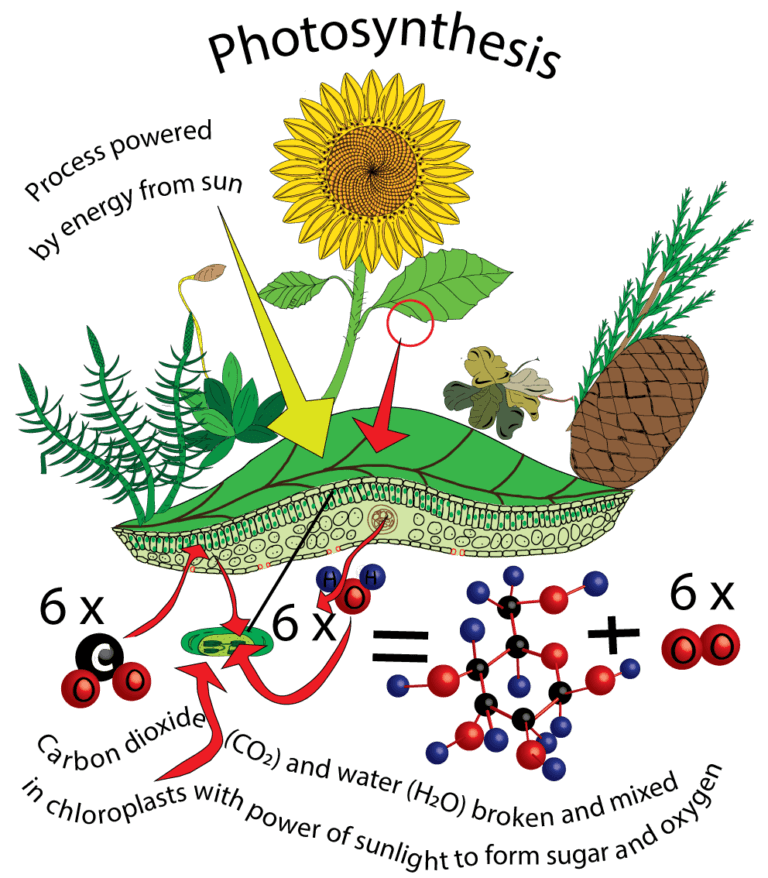
Why do leaves change colour in the Winter?
A general explanation is available at the website of the Royal botanic Gardens Kew. In the article “why do leaves change colour in autumn” Chris Clennet’s article (click here) explains that trees, that lose their leaves for winter, shutdown the process of photosynthesis (photosynthesis being the process by which trees make sugar, using energy from the sun and water and other nutrients from the soil). Chlorophyll is a chemical that is central to that process of photosynthesis and it is green in colour. Chlorophyll constantly breaks down and is replaced during the summer but the process slows down during the autumn and so that then reveals other chemicals in the leaves that were previously hidden by the green chlorophyll. These include yellow flavonols, orange carotenoids and red to purple anthocynanins. The exact mixture of these differ from one species to another and so this leads to a difference in the degree of yellowness or redness in the leaves. Not all trees can make anthocyanins but others do such as, perhaps unsurprisingly, red maple, red oak and scarlet oak.
The article says that it is thought that the red or purple anthocyanins either protect the leaf from cold temperatures or deter pests. It also says that the presence of these compounds might allow the tree longer to reabsorb other valuable nutrients as the temperatures drop in autumn.
Some interesting insights into the diverse protective roles of anthocyanins in leaves is given in the article by Kevin S Gould which can be found in the Journal of biomedicine and biotechnology (J biomed biotechnology.2004 December 1; 2004 (5): 314 – 320 found by clicking here
The article focuses on how anthocyanins have a range of possible functions such as protecting plants against stresses such as UV-B and heavy metals as well as resistance to herbivores and pathogens.
The article highlights, amongst other things, the following potential advantages of anthocyanins:
(1) For most vascular plants (vascular being those with a system that carries fluids around the plant) the red colour is achieved by anthocyanins – predominantly cyanidin-3-O-glucoside). Producing this chemical takes a lot of effort for the plant in terms of costs associated with that production process. This suggests that it likely has a vital function.
(2) The anthocyanins absorb green and yellow wave bands of light and so that is why having removed the yellow / green light from the spectrum of light reflected from the leaf surface they look red. This is only one of the reasons though why plants look red because as the article says the shape of the leaf and the amount and distribution of chlorophyll also have an impact on the degree of red light that is reflected.
(3) Some insects appear to preferentially avoid eating red pigmented leaves and so the anthocyanins may effectively give the plant a means of defending itself.
(4) Some plants with chemicals that are toxic to insects, bacteria and fungi are susceptible to light damage. However, anthocyanins can assist in stopping the damage that light would otherwise cause to these chemicals; and ultimately this contributes to the plant’s defence against would-be attackers.
(5) Although plants need a light to power the process of photosynthesis in producing sugars too much light can sometimes be a bad thing. Under severe conditions of light it can even break down proteins and damage DNA. Anthocyanins have been shown to reduce the severity of this effect as well as to increase recovery of the photosynthesis process. Effectively the anthocyanins protect the leaves from the severe “excess” light by absorbing excess photons.
(6) Protection from ultraviolet radiation. The anthocyanins have a role to play especially in protection against UV – be in that they can mitigate DNA damage. However, it is not certain that they are primarily concerned with UV protection because there is evidence that anthocyanins and prevent the photo activation of an enzyme that is used in the repair of UV damage DNA. As such there appears to be more investigation required to establish precisely what extent anthocyanins have a role to play in protection from ultraviolet radiation.
(7) Free radical scavenging. Anthocyanins are scavengers of free radicals. Microscopic examinations of wounded leaves have shown that red pigmented cells eliminate hydrogen peroxide significantly faster than green cells.
(8) Lessening stress responses. Anthocyanins are associated with increased resistance to the effects of chilling and freezing, to heavy metal contamination, to drying processes and to wounding.
As the author puts it anthocyanins are the Swiss army knife of the plant kingdom.
